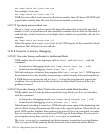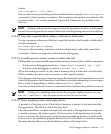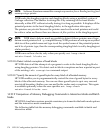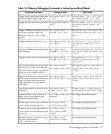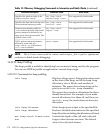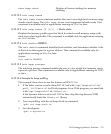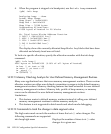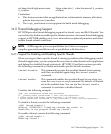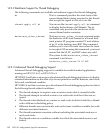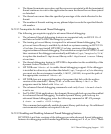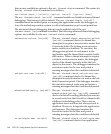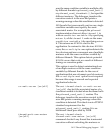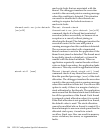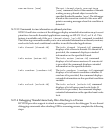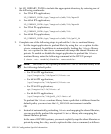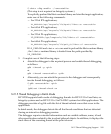14.11.2 Backtrace Support for Thread Debugging
The following commands are available as backtrace support for thread debugging:
bt The bt command provides the stack trace of the
current thread that is being executed or the thread
that accepts the signal in case of a core file.
thread apply all bt You can use the thread apply all bt command
to display the backtrace of all threads. The bt
command only provides the stack trace of the
current thread under execution.
backtrace_other_thread The backtrace_other_thread command prints
the backtrace of all stack frames for a thread with
stack pointer SP, program counter PC and address
of gr32 in the backing store BSP. This command
enables you to view the stack trace when the stack
is corrupted. When using this command, you must
ensure that the SP, PC, and BSP values are valid.
The syntax for the backtrace_other_thread
command is as follows:
backtrace_other_thread SP PC BSP
14.11.3 Advanced Thread Debugging Support
Advanced thread debugging support is available for multi-threaded applications
running on HP-UX 11iv2, or HP-UX 11iv3.
HP WDB 5.5 and later versions provide advanced thread debugging features to display
extended information on the state of pthread primitives such as mutexes, read-write
locks and conditional variables.
HP WDB 5.6 and later versions provide advanced thread-debugging options to detect
the following thread-related conditions:
• The thread attempts to acquire a non-recursive mutex that it currently holds.
• The thread attempts to unlock a mutex or a read-write lock that it has not ac-
quired.
• The thread waits (blocked) on a mutex or read-write lock that is held by a thread
with a different scheduling policy.
• Different threads non-concurrently wait on the same condition variable, but with
different associated mutexes.
• The thread terminates execution without unlocking the associated mutexes or
read-write locks.
• The thread waits on a condition variable for which the associated mutex is not
locked.
182 HP-UX Configuration-Specific Information



